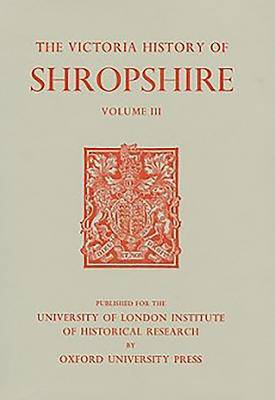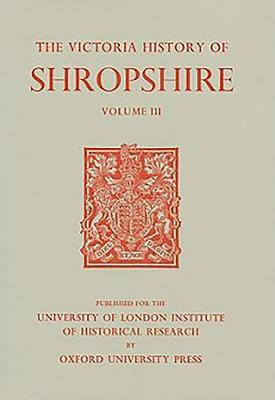
- Retrait gratuit dans votre magasin Club
- 7.000.000 titres dans notre catalogue
- Payer en toute sécurité
- Toujours un magasin près de chez vous
- Retrait gratuit dans votre magasin Club
- 7.000.000 titres dans notre catalogue
- Payer en toute sécurité
- Toujours un magasin près de chez vous
104,95 €
+ 209 points
Description
The themes of Volume III are the government and parliamentary representation of Shropshire from their beginnings up to 1974. The long perspective allows the vicissi-tudes of successive institutions of county government to be examined thoroughly. For example, the rise of the justices of the peace is fully chronicled from their in-conspicuous origins under Edward I to the amplitude of their powers and duties in the 17th, 18th, and 19th centuries. Shropshire's medieval government had a number of peculiarities, caused by the county's fron-tier position opposite the hostile Welsh. Accordingly its 'palatine' earldom, its serjeants of the peace, its loss of territory to marcher lordships, and its subjection to the Council in the Marches of Wales receive special attention. From Elizabeth I's reign, as the magistrates' concerns increased, the story comes to include much of the social history of the times. From 1889, when the county council was formed, that history has been one of unprecedented penetration by local government into formerly untouched areas of local and personal affairs. The institutions of Shropshire's govern-ment provided opportunities for influence and advancement; the volume thus em-bodies a history of the fortunes of Shrop-shire's leading men and families. Most prominent in the Middle Ages were the earls of Shrewsbury, Arundel, and March. Since then the families of Corbet, Newport, Herbert, Clive, and Bridgeman have been among the weightiest. Linked with their fortunes were those of smaller landowners and local officials. In the 18th century, with the appointments of itsfirst permanent county treasurer and of its first county surveyor, Thomas Telford, Shropshire took a large step towards the formation of a modern county bureaucracy. Nowhere has the play of ambition and manouvre been more openlyexercised than in elections to Parliament. The volume explores the intricacies of Shrop-shire electioneering from Edward I's reign to the general election of October 1974, and illustrates the manner in which conflicting electoralinterests bit deep into the sub-stance of Shropshire society.
Spécifications
Parties prenantes
- Editeur:
Contenu
- Nombre de pages :
- 415
- Langue:
- Anglais
- Collection :
Caractéristiques
- EAN:
- 9780197227305
- Date de parution :
- 01-01-79
- Format:
- Livre relié
- Format numérique:
- Genaaid
- Dimensions :
- 315 mm x 226 mm
- Poids :
- 2018 g






